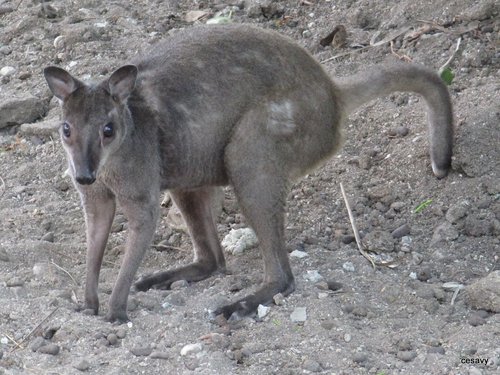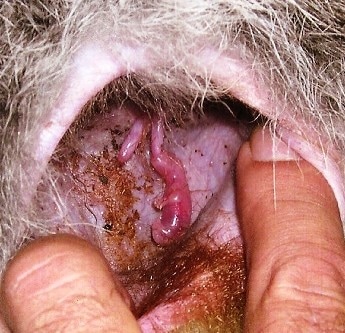|
Another creature that makes an appearance in my novel, DIFFUSION, is the Dorcopsis. Sometimes these are called gazelle-faced wallabies. As you can probably guess from the photo above, these cat-sized creatures are related to kangaroos (they are all part of the group of marsupial mammals called Macropods, which includes kangaroos, tree kangaroos, wallabies, and more). Why is the Dorcopsis amazing? Well, one reason is that they are exceedingly obscure, found only in certain forests of New Guinea and a few Indonesian islands. Also, they usually have only one young at a time, which starts out as a tiny, naked, jellybean-sized critter, which then lives in the mother's pouch for a whopping 180 days! Wow, talk about kids who are reluctant to leave home! Usually the next baby is born before the last one has left the pouch, and the mother will suckle both young at the same time. Notice how the young in the photo above is suckling on one of two teats? Well, many of the kangaroo-type marsupials can produce two types of milk, one that is suited more for the tiny newborn, and another type of milk with a higher fat content for the older joey.
And one more thing. The Dorcopsis has fairly long front legs (for a kangaroo, that is). Aboriginal hunters report that they are most often encountered on rocky banks of rivers, where they use those long arms to flip over flat stones as they search for cockroaches to eat. Yum! And so the Dorcopsis deserves a spot in the GAHOF. That's the Gradely Animal Hall of Fame. Fun Fact: the term Gradely was first used to refer to people who were prompt, but by the 1400s, it was used to label things, basically meaning they were "awesome."
0 Comments
Leave a Reply. |
Stan's Cogitations
Everyone needs a creative outlet. That's why I write. Archives
July 2024
|



 RSS Feed
RSS Feed